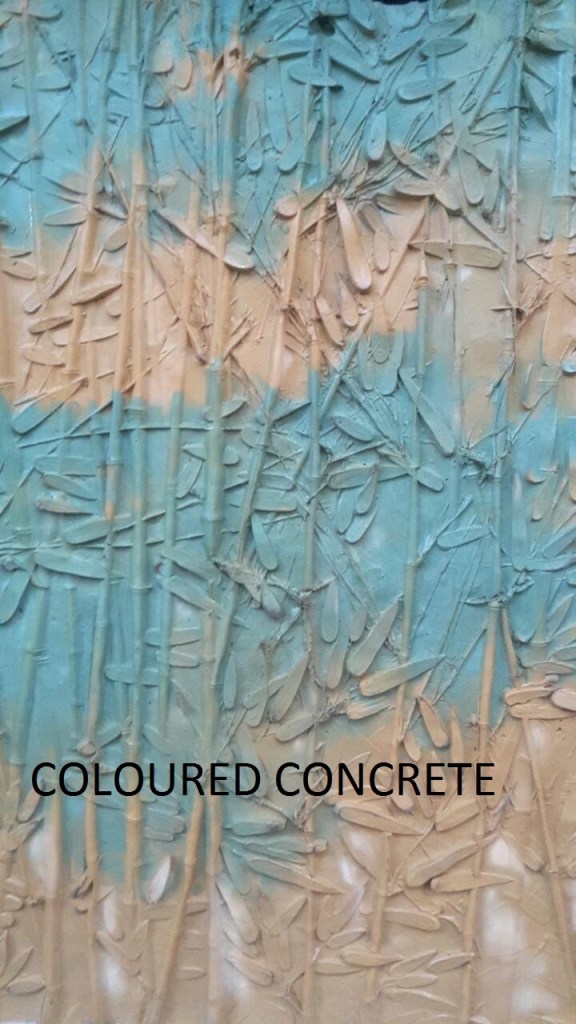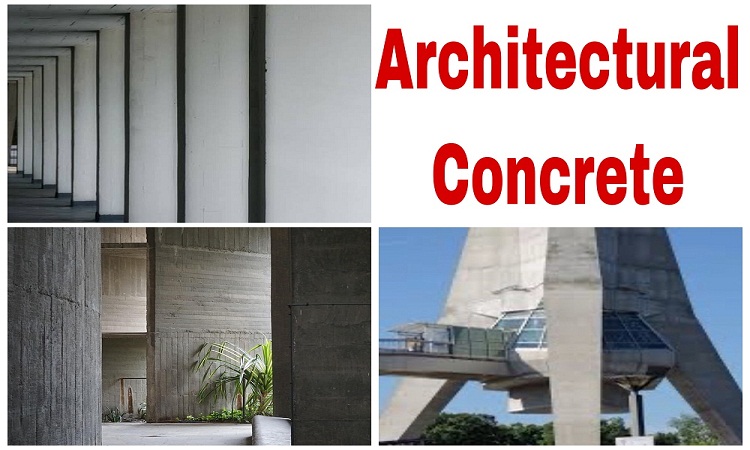Almost every Architect and Developer wants their building and structures to be somewhat unique and unmistakable…. And nowadays Green.
One special subset of concrete is called architectural & decorative, which refers to concrete that provides an aesthetic finish and structural capabilities in one. Because of its versatility, concrete offers immeasurable design possibilities. Moreover, concrete permanently captures the chosen look. Concrete is a visually rich material that allows the architect or designer to be innovative and acquires design objectives that cannot be achieved with other materials. Whether that involves special moulds, special finishing techniques, or special ingredients, the variety of effects is almost unlimited. Fair-faced or exposed quality concrete is popular and the demands on its performance are continuously rising. In the last couple of years, concrete has slowly made a comeback with innovative and featuring new decorative methods that are not only gorgeous but much more affordable.
Concrete can easily replicate the high-end look of masonry, marble, cut stone, and even exotic and sculpted decorative design or pattern in both physical beauty and durability.
Achieving an architectural or decorative appearance and design usually requires that something different is done to the concrete. However, many factors must be optimized with one another in order to create high-quality concrete surfaces.
Important Aspects in ARCHITECTURAL CONCRETE
Colours, Stains
Concrete can be tinted or colored to provide several tones by using various surface treatments, allow designers to specify any color they want. A wide range of finish combinations can be achieved easily.
Integral Colour
This coloring system encompasses subtly muted earth tones. It is based on synthetic oxides for UV-stability and conforms to DIN / EN standards. Integral color is typically added to the precast concrete mix. It cannot be applied to the surface of fresh concrete because it will not permanently bond to the concrete as shake-on color hardness do.
Shake-on Colour Hardener
Shake-on color hardener comes in a light color, rich hue, and select greens and blues that may be cost-prohibitive as an integral color. Topically applied and finished over fresh precast, this system is a prepackaged blend of synthetic oxides, graded silica quartz aggregate, and Portland cement. It also lends wear-resistance to the surface. It cannot be added to ready-mixed concrete as the pigment load in a bag of the product is too low to color the full depth of a precast slab, unlike packaged integral color.
Chemically Non-Reactive / Reactive Stains
Including a limited range of translucent, variegated, and mottled earth tones, chemically reactive stains consist of metallic slats in an acidic solution that reacts with the calcium hydroxide formed as cement hydrates. These stains are applied to hardened precast concrete and cementitious overlays, with surface preparation being important. Stains cannot be applied to uncured precast concrete because the calcium hydroxide needed for the coloring reaction is more readily and consistently available once the concrete hardens.
When selecting from a color chart, it is imperative to ensure the product in question is aesthetically and functionally appropriate for the installation in question. Though coloring systems are not interchangeable, they can be combined for more colorful and creative effects.


The inherent natural beauty of sand and stone is most often expressed in architectural concrete. A wide variety of textures and surface finishing can be created in the concrete to add interest. The most common of these are:
Smooth or off-the form finishes show the natural look of the concrete without trying to imitate the appearance of any other building product.
Exposed-aggregate finishes, via chemical deactivators, are achieved with a non-abrasive process that effectively brings out the full color, texture, and beauty of the coarse aggregate.
Micro / Acid etching via acid-gel dissolves the surface cement paste to reveal the sand, with only a small percentage of coarse aggregate being visible, providing a light exposure.
Sand or abrasive blasting however has limitations.
Honing or Polished finishes are achieved by grinding the surface to produce smooth, exposed-aggregate appearances so as to reach a certain level of gloss. The use of a densifier is also possible to achieve a better luster.
Combination Finishes two or more finishes can be easily achieved using the same concrete mix.
Designs on Concrete
A variety of attractive patterns shapes and surface textures can be achieved by using pre-shaped form liners as the casting surface. The form liners are normally made of PU elastomer plastic or rubber for heavy-duty or light-duty application considering the repetitions, or wood, plaster for limited usage.
Stone Replication
Special mixes and finish techniques are used to mimic limestone, sandstone, granite, and any other type of stone desired. The finishes are produced far more economically than a real stone can be laid, and they can be erected or construct much quicker. Form liners can replicate unusual pieces such as cut stone or slate, limiting options only to the designer’s imagination.

Contemporary Designs
Concrete offers plasticity in shapes, curves, and geometries that can create any desired look. They interface smoothly with glass and other modern materials to create the desired look.
Timber Designs
Wood, bamboo, grass related designs can be cast on concrete using these form liners.

Replicating Existing Styles
With its ability to replicate such a wide range of materials, precast concrete panels ensure new buildings blend with existing ones.
Embellishments
Corporate or school names, emblems, and other custom touches can be embedded into concrete, creating unique accents at an attractive cost. Special form liners can create sculpture forms for custom designs that create a standout facility.

Architectural Aggregate
Use of natural crushed rock aggregates, Dolomite, Quartz, Aluminum silica slag, Sandstone, Limestone, Granite, Porphyry, Syenite, Andesite, Marble, Diabase, Basalt, Anorthosite in a wide range of grading (1-3, 2-5, 2-8, 5-8, 8-12, 8-16, 12-16 mm) and in various colors.

The large choice of raw materials opens the way for the fulfillment of the desire of designers, architects, and developers for customized architectural precast.
Formwork Releasing Agents
Conventional de-shuttering oils are not suitable as they lead to cloud formation and the excess oil, which accumulates in the often deep structures of the moulds, causes increased formation of pores. In addition, surfaces produced with this type of release agent result in dusty concrete surfaces, which leads to faster weathering.
The releasing agents make it easier to strip the formwork/mould without damaging the casted design and protect the form liner thereby increasing its durability.
Efflorescence causes white filmy deposits on concrete surfaces and spoils the look of architectural precast. Alkalies and calcium hydroxide in solution in the pores migrate to the surface. At the surface, CO2 reacts with these Alkalies & Hydroxides to form Ca, Na, K slats. The use of integral water-repellent/efflorescence control admixture for precast minimizes the efflorescence.
Architectural concrete is often used as an outside wall or façade or flooring and are therefore exposed to dirt and weathering. The sensitive concrete surfaces however make the cleaning very difficult, if not impossible, as the cleaning with standard cleaners very often leaves stains and remains visible. It is therefore recommendable to protect the sensitive and priced concrete product with a suitable protective agent. Conventional protective coatings are not suitable, as they either contain solvents or are not compatible with the residual moisture in the concrete, or they do not offer sufficient breathability and show a tendency to discoloration. Hence use of specific concrete protective coating will protect against efflorescence, frost, weathering effects, soiling, and moss formation.
Concrete can provide any appearance desired in a cost-effective way with added benefits no other cladding material can match.


